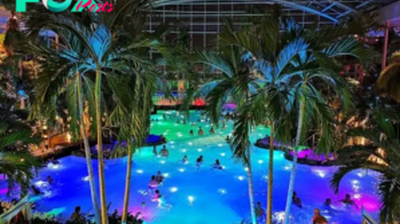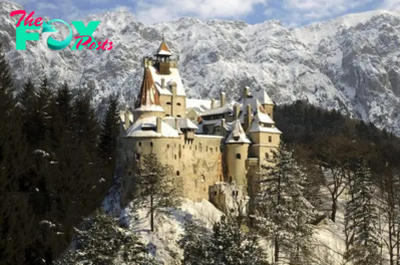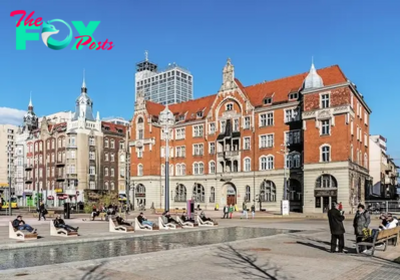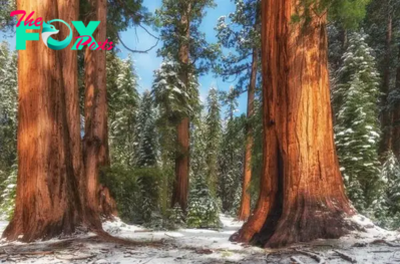Travel
Best Time to Visit Kyoto: Month-by-Month Guide
Home to thousands of lovely Shinto shrines and Buddhist temples, Kyoto is one of the most popular places to visit in Japan. Once the country’s capital, it has lots of enchanting palaces and Zen gardens to discover alongside its historic Gion District.
Most visitors head here in either spring or autumn when the blooming cherry blossoms and fiery fall foliage make the City of Flowers look even more stunning. While the high heat and humidity can get a bit much in summer, the cheaper prices and cool festivals mean plenty of people still visit. Winter too can be magical when everywhere is coated in pristine snow.
To help you plan your trip, let’s take a look month-by-month at what Kyoto’s climate is like and when the city’s sights are most crowded. We’ll also cover what periods are more or less expensive to visit and what exciting events are going on.
Contents:
What’s the Weather Like in Kyoto?

Surrounded on three sides by scenic forest-clad mountains, Kyoto lies in a valley in Western Honshu. The sizeable city has four distinct seasons with summers being hot and humid and winters relatively cold with snow sometimes falling.
While each month sees around 15 to 23 days of rain, June and July are by far the wettest with torrential downpours regularly soaking its temples and shrines. It’s a good idea to pack waterproof shoes and pick up an umbrella from one of the countless convenience stores.
Along with July, August is the hottest time of year when temperatures average around 29 to 30°C (84 to 86°F). When it’s not raining, the skies are sunny and blue with these summer months also enjoying roughly 13 to 14 hours of daylight a day.
Both March to May and September to November (spring and autumn) have much milder temperatures with there also being next to no humidity. It still rains quite a bit though with winter being the driest time of year.
Best months to visit Kyoto

As it is sakura season and the plum trees are blossoming; March, April and May are among the most popular months to visit Kyoto. While the gardens and shrines look incredible, spring in the city is very crowded and prices are much higher, especially around Golden Week. The important Aoi Matsuri festival also takes place during this time.
September, October and November are the same as people flock here to enjoy the glittering golden leaves of its trees. Aside from touring the temples or taking day trips to Nara, Osaka and Hikone, you can attend elaborate parades for its Jidai Matsuri festival.
Although visiting in summer can be a rather soggy, sweaty affair, the long, sunny days mean you have lots of time to see its sights. The Gion District also looks amazing, glistening in the rain with way fewer visitors milling around. Matsuri in July is also one of the largest and most famous festivals in the country.
Kyoto in January

January sees only a handful of tourists arrive in Kyoto as most people are put off by the cold weather. Temperatures average 6°C (43°F) with freezing conditions at night sometimes seeing snow coat the city for a few days. During hatsumode – the first temple or shrine visit of the year – many Businesses and museums close for the first few days of the month.
After this, popular spots like the Fushimi Inari-taisha Shrine and Yasaka Shrine are blissfully crowd-free. While it does drizzle a bit for around 23 days, a lot less rain falls than during the spring and summer months. The other big event in January is the traditional Toshiya archery contest at Sanjusangen-do Temple.
Kyoto in February

With the cold not letting up, February is still the off-season in Kyoto. Prices are cheaper with no crowds found at temples or in the Gion District. When wandering about, you’ll want to layer up and stop for hot cups of green tea or piping bowls of ramen from time to time. You can also relax and soak in one of its many steaming onsen.
Setsubun festivals are also held in February to mark the end of wintertime and celebrate the start of spring. At Yasaka Shrine, various ceremonies take place with people wearing masks and throwing beans to drive away evil spirits. Its plum trees also start blooming with Kitano Tenmangu Shrine and Kyoto Botanical Gardens being two of the best places to see them.
Kyoto in March

More people visit in March as there are now 5 hours of sunshine and 12 hours of daylight a day in which to walk about. Towards the end of the month, its colourful cherry blossoms begin to flower, creating a stunning spectacle with all the plum trees beside them. Around this time, prices rise as crowds flock to its shrines to snap photos of their pretty pink Petals.
As April is the absolute peak season in Kyoto, March is a great month to visit if you want to see the sakura without spending too much and having to jostle for space everywhere. It can still snow though early on with temperatures usually averaging around 10°C (50°F). This is also a nice time to take trips to either Nara or Hikone before they get too busy.
Kyoto in April

With cheery cherry blossoms lighting up all its hillsides, temples and shrines, the first couple of weeks of April are among the busiest of the year in Kyoto. Prices are at their highest and popular viewing spots such as Maruyama Park, the Kyoto Gyoen National Garden and Gion’s Shimbashi district are absolutely packed.
As the second half of the month is much less crowded, this is a good time to explore the city and see the sakura while the weather is warmer. It’s probably worth taking an umbrella with you though as it rains quite a bit for around 17 days. Other than hanami (flower viewing), you can see tons of cute baby Japanese macaques at the Iwatayama Monkey Park as spring and summer are when they usually give birth.
Kyoto in May

Both its prices and crowds shoot up again for Golden Week when almost all of Japan seems to be on the move. Many people visit Kyoto during this series of public holidays at the start of May. While its cherry blossom season is over, all its gardens, parks and the bamboo forest are lush green. Iris, azaleas and maple trees only make its scenery look even more lovely.
With temperatures now averaging 22°C (71°F), exploring the Golden Pavilion’s grounds and Gingakuji Temple’s gardens is much more enjoyable. Costumed processions also make their way from the Imperial Palace to the legendary Shimogamo Shrine for Aoi Matsuri; one of its biggest and most important festivals. You can also watch spring geisha dances at its annual Kamogawa Odori which was first held for the First Kyoto Exposition in 1872.
Kyoto in June

As its humidity starts to rise and the rainy season sets in about halfway through the month, June is relatively quiet tourist-wise. Lots of fun events take place though with traditional tea ceremonies, taiko drum performances and poetry readings all held at the Fujinomori Shrine for its Hydrangea Festival. You can also dine alongside the Kamo River or watch captivating Takigi Noh theater pieces at the Heian-jingu Shrine.
While there are fewer crowds around and prices are low, it does rain a lot for 19 days of the month on average. You’ll want to pack a raincoat and umbrella or spend time indoors at the Samurai and Ninja Museum or under Nishiki Market’s covered walkways. Try and stop by the quiet Sanzen-in Temple too, just north of Kyoto, as it is known for its hydrangeas.
Kyoto in July

Although the heat and humidity can get a bit much, slightly more people visit in July due to the summer holidays. As the typhoon season also starts, it rains a staggering amount – the most of the year along with June. While you’re certain to get soggy at some point, there is a magical feel about its misty temple gardens.
When you’re not sheltering from the downpours in an ancient shrine or atmospheric izakaya, you can always peruse the Umekoji Park handicrafts market. Music, dances and other rituals are all performed for the Mizu Matsuri at Kifune Shrine while firewalking ceremonies light up the night at Tanukidan-san Fudo-in Temple. The highlight, however, is the month-long Gion Matsuri which sees sacred dances and float-filled processions pop up all around town.
Kyoto in August

August is arguably even worse weatherwise as temperatures now hover around 30°C (86°F) with it often feeling even hotter. There is also a lot less rain to cool down the city with a very muggy atmosphere hanging in the air. While flights are more expensive, hotels are at least more affordable than in spring or autumn.
Despite the uncomfortable weather, quite a few crowds are found at its Arashiyama Bamboo Forest and Fushimi Inari-taisha Shrine. At night, when it’s cooler, you can see the Tanabata Star Festival alongside the river or Kodai-ji Shrine’s ‘Illustrated Night Parade of One Hundred Demons’.
Dramatic bonfires and fireworks shows are also held for its famous Obon Festival. In addition, you can enjoy beers and food with geishas at the Kamishichiken Beer Garden.
Kyoto in September

While the start of September is usually still quite hot and humid, things begin to cool down a bit later in the month as autumn sets in. Quite a lot of rain still falls as this central part of Japan is prone to typhoons. Although there is no fiery foliage to see yet, some of its temples and shrines hold full moon viewing festivals.
Other than attending these ‘tsukimi’ events at either Shimogamo or Kitano Tenmangu, you can stroll along the picturesque Philosopher’s Walk now that temperatures are cooler. Martial arts demonstrations and blue dragon dances also take place at some other temples. Many of its already attractive historic sights also have beautiful purple chrysanthemums blooming in their gardens in September.
Kyoto in October

With average temperatures dropping to 20°C (68°F) and it now raining a lot less, October is one of the most pleasant months to visit Kyoto. Its main attractions are all pretty crowded, however, with its hotel prices also rising. This is because many Chinese tourists visit during their Golden Week at the start of the month with exciting festivals and its amazing autumnal foliage attracting massive crowds at the end of it.
Aside from exploring the Gion District, there are elegant ikebana arrangements and lovingly made pottery pieces to admire at festivals dedicated to these ancient art forms. Most visitors head here though for either its elaborate Jidai Matsuri or thrilling Kurama Fire Festival. While the former has long processions of volunteers clad in historic costumes for you to watch, the latter sees huge flaming torches light up the slopes of Mount Kurama.
Kyoto in November

As it is usually considered the best month to see all the gorgeous reds, yellows and golds of its maple and ginkgo trees, November is one of the busiest times of year in Kyoto. Its prices also shoot up as everyone comes to snap photos of their arresting colors. Some of the best views are at Eikando Zenrinji Temple and from Tofukuji Temple’s Tsutenkyo Bridge.
With its days now much cooler and drier, this is a good time to hike from Kibune to Kurama, passing through stunning forests and mountains along the way. You can also warm up in hot springs or try some tasty seasonal dishes in its restaurants. Various festivals celebrating the autumn are also held at its temples, shrines and gardens.
Kyoto in December

Although quieter, December’s short days are still a popular time to visit as the Koyo season continues for the first week or two. After this, the last of its colourful autumn leaves fall with winter setting in and temperatures averaging around 8°C (46°F).
Loads of lovely light installations brighten up the city, especially at the Kyoto Station and Heian Shrine. Much of the Arashiyama District is also magically lit up with its bamboo forest and Togetsukyo Bridge being the main highlights.
While you’ll need to wrap up warm, must-see sites like Nijo Castle, the Golden Pavilion and Kiyomizu-dera Temple are much less crowded later in the month. Besides perusing the flea markets at To-ji Temple and Kitano Tenmangu, it’s great fun going Christmas shopping as its big department stores are delightfully decorated. To welcome the New Year, people gather at Yasaka Shrine or Chion-in Temple and ring their bells as midnight approaches.
-

 Travel1d ago
Travel1d ago9 Best Places to Live in Ohio, According to Local Real Estate Experts
-
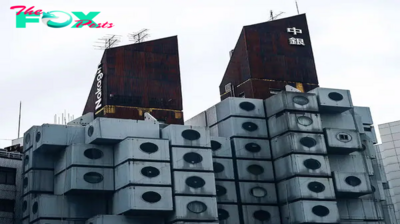
 Travel3d ago
Travel3d agoYou’ll Soon Be Able to Stay The Night in a Nakagin Capsule
-
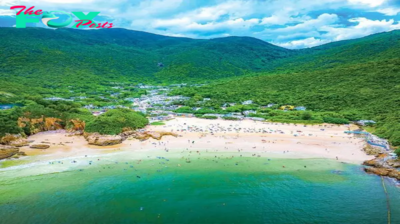
 Travel4d ago
Travel4d ago9 Beaches in Hong Kong With the Most Stunning Views
-

 Travel4d ago
Travel4d agoThis New Airline Caters to Jet-Setting Pups
-
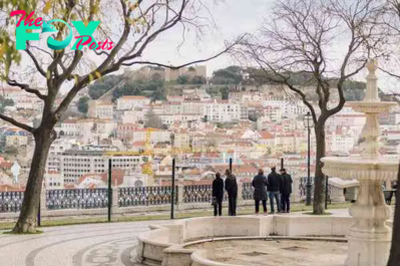
 Travel5d ago
Travel5d ago9 Best Places to Live in Portugal, According to Local Real Estate Experts
-
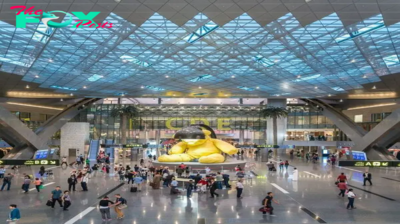
 Travel1w ago
Travel1w agoDoha’s Hamad International Airport Dethrones Singapore’s Changi Airport as the World’s Best
-

 Travel1w ago
Travel1w ago10 Green and Sustainable Hotels in Hong Kong for the Most Eco-Friendly Stay
-

 Travel1w ago
Travel1w agoSingapore’s Siloso Beach Makes It to ‘Top 100 Beaches of the World’ List




